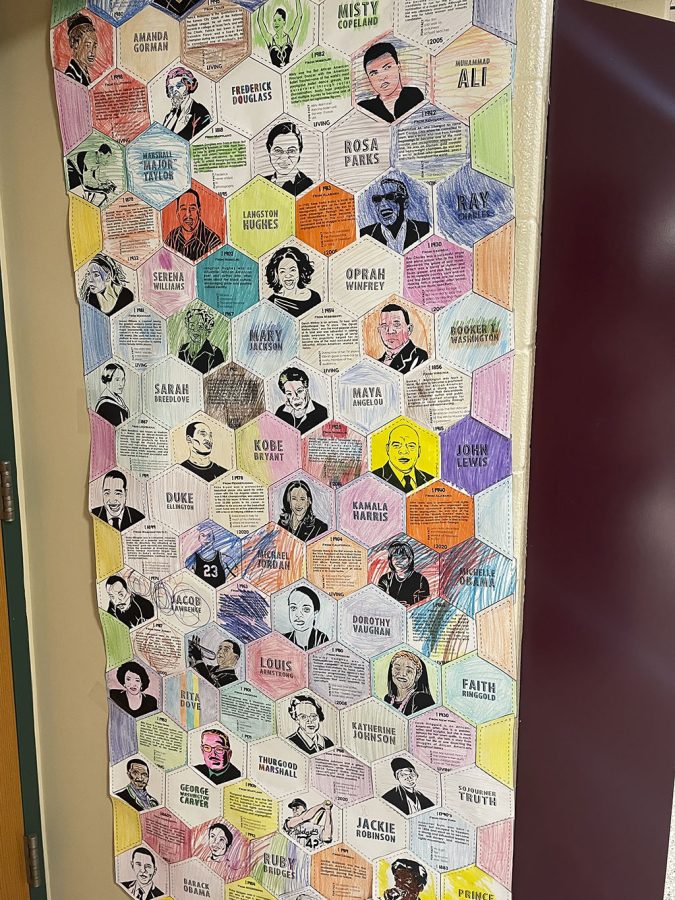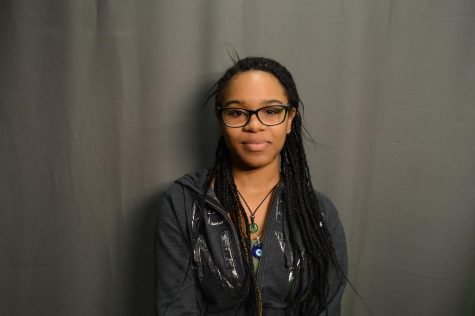B[lack] hi[story]: How schools can improve their take on Black History Month throughout the school
On the door of an NHS classroom, a mural of Black historical figures greets students. The project was created as part of BHM.
April 20, 2023
THE PROBLEM:
Since 1976, Black History Month has been recognized every February all throughout America. By highlighting influential Black figures in America and around the world, the celebration not only honors the legacy of these individuals, but helps teach the younger Black generations their ancestral history. So what do we as students do when this standard isn’t being met? Through the years, the prominence of Black history has either declined or is simply not recognized in schools. Icons of Black history like Dr. Martin Luther King Jr. and Fredrick Douglass are reduced to the second month of the year, and schools and textbooks tend to reduce their role in American history. Instead of teaching these figures as part of history, many of their stories are diminished or ignored entirely.
Some schools around the country aren’t only avoiding BHM, but Black history as well. And with the help of some state governors, this issue is becoming more and more common. In current news, “critical race theory”, an academic concept that race is a social construct, and that racism is not merely the product of individual bias or prejudice, but also something embedded in legal systems and policies, has been a trending debate topic with lawmakers of both political parties alike. There’s a common misconception that it’s actually a divisive discourse that pits people of color against white people, which surprisingly, many observers believe. For example, in Texas, governor Greg Abbott signed a bill in 2020 that restricts how America’s long history of racism is taught in Texas schools. Even last year, the HB 1134 bill that was approved by the Indiana House attempted to ban “CRT” and topics about race from K-12 classrooms. Although this bill ultimately died in the Indiana Senate, the legislation was backed by a majority of Republican representatives, with 60 house members voting for it. But even without laws like this, the textbooks that we as students are learning from and that our teachers base lessons on are unreliable. One of the most popular history books that Noblesville uses, the McGraw-Hill, faced criticism in 2015 for misinforming students about the Transatlantic slave trade, seeming to ultimately erase the truth of slavery all together.
HOW TO FIX IT:
Instead of relying on various student union groups to celebrate their designated month, educating the entire student body of the historical elements they’re missing is needed to improve the community NHS is seeking to cultivate. Teachers and members of many Noblesville Schools departments have to begin integrating Black history into the basic K-12 history curriculum. Students need to be exposed to the Black diaspora when African slaves were removed from their homeland and brought to America. Historic events such as slavery, the civil rights movement, and the introduction of HB 1134 need to be remembered outside of the month of February.
The issue of avoiding Black History Month is a deeper issue entirely. However, acknowledging the fact that the Black history learned during February is history that is equally American as what we’ve typically been taught shifts us one step closer to learning true history. And by teaching this history correctly, not just during BHM, young Black and African-American students all throughout the world will benefit.



